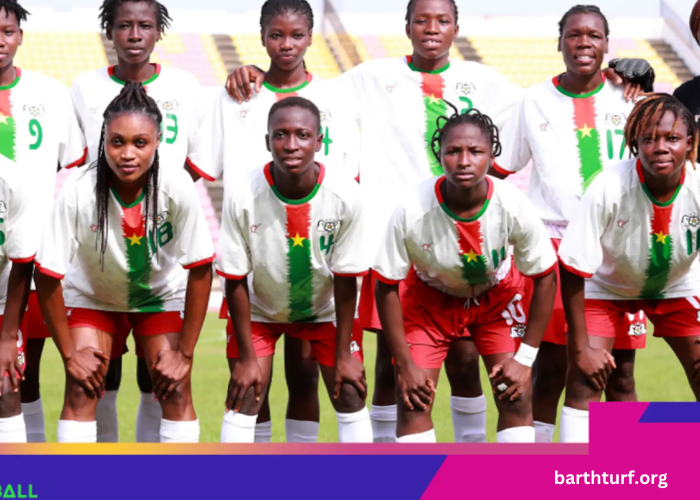Burkina Faso Foot has steadily risen in the ranks of African football, gaining recognition for its talent, passion, and competitive spirit. Over the years, the country’s football teams, both at the club and national levels, have made significant strides, earning the respect of their continental rivals.
From notable performances in international tournaments to the growth of domestic leagues, Burkina Faso Foot is a testament to the country’s determination and footballing talent. This article will explore various aspects of Burkina Faso Foot, diving into its history, recent developments, and what the future holds for football in Burkina Faso.
How Has Burkina Faso Foot Developed Over the Years?
The development of Burkina Faso Foot can be traced back to the early 1960s when the country gained independence and began to establish its own football culture. Initially, football in Burkina Faso faced several challenges, including a lack of infrastructure, funding, and proper training facilities. However, over the decades, the sport has grown significantly, thanks to government support, private investment, and the passion of the Burkinabé people.
The national team, the Stallions, is a prime example of this growth. Over the years, they have evolved from underdogs in the African Cup of Nations (AFCON) to serious contenders, with their best performance being a runner-up finish in 2013. This success story has spurred further interest and investment in Burkina Faso Foot, leading to the improvement of domestic leagues, youth academies, and the development of football talent.
What Are the Most Significant Achievements of the National Team in Burkina Faso Foot?
The national team of Burkina Faso, nicknamed “The Stallions,” has had several remarkable achievements that highlight the progress of Burkina Faso Foot. The most notable of these is their impressive performance in the 2013 AFCON, where they finished as runners-up after losing to Nigeria in the final. This was a defining moment in the country’s football history, as it marked their best performance in a major international tournament.
In addition to the 2013 AFCON, the Stallions have consistently qualified for the tournament since 1996, demonstrating their growing strength in African football. Their semi-final appearance in the 2017 AFCON further solidified their reputation as one of the continent’s rising football powers. The team’s success has also contributed to increased enthusiasm for Burkina Faso Foot among young players, who aspire to represent their country on the international stage.
How Are Domestic Leagues Contributing to the Growth of Burkina Faso Foot?
The domestic leagues in Burkina Faso play a critical role in the development of Burkina Faso Foot by providing a platform for young talent to showcase their skills. The Burkina Faso Premier League, known as the “Championnat National de Football de Burkina Faso,” is the top-tier football competition in the country. It features clubs like ASFA Yennenga, Étoile Filante de Ouagadougou, and USFA Ouagadougou, which have historically dominated the league and contributed players to the national team.
Over the years, these domestic leagues have improved in terms of organization, competitiveness, and quality of play. This has attracted scouts from both African and European clubs, leading to the export of Burkinabé talent to higher-profile leagues abroad. The success of players like Bertrand Traoré, who has played for European clubs such as Lyon and Aston Villa, demonstrates how domestic leagues are contributing to the growth of Burkina Faso Foot.
What Role Do Youth Academies Play in Shaping the Future of Burkina Faso Foot?
Youth academies are the lifeblood of any footballing nation, and Burkina Faso is no exception. In recent years, there has been a concerted effort to improve the quality of youth development programs in the country. Several football academies, such as Salitas FC’s youth academy, have emerged as key contributors to the talent pipeline in Burkina Faso Foot. These academies focus on nurturing young players, providing them with professional coaching, access to better facilities, and opportunities to compete at a high level from a young age.
Many of the players who come through these academies go on to represent Burkina Faso at both club and international levels. The success of these programs is evident in the growing number of Burkinabé players making a name for themselves in European leagues. As youth academies continue to grow and receive support from both the government and private sector, the future of Burkina Faso Foot looks increasingly bright.
How Is Burkina Faso Foot Performing on the International Stage?
On the international stage, Burkina Faso Foot has made notable strides, especially in recent years. The Stallions’ consistent presence in AFCON tournaments highlights their growing competitiveness within Africa. In addition to their AFCON success, the team has also been working towards qualifying for the FIFA World Cup, a goal that has so far eluded them but remains within reach as the quality of Burkina Faso Foot continues to improve.
International friendlies and participation in regional competitions, such as the West African Football Union (WAFU) Cup, provide the national team with valuable experience and exposure. Furthermore, the team’s improving FIFA ranking reflects their steady progress and growing recognition as a formidable opponent on the international scene.
Who Are the Key Players to Watch in Burkina Faso Foot?
Several players have emerged as standout talents in Burkina Faso Foot, both domestically and internationally. Bertrand Traoré is perhaps the most famous name associated with Burkina Faso, having played for major European clubs such as Chelsea, Lyon, and Aston Villa. His technical ability, pace, and leadership on the field make him a key figure for the national team.
Other players to watch include Edmond Tapsoba, a commanding defender who plays for Bayer Leverkusen in Germany, and Issa Kaboré, a promising right-back currently on loan from Manchester City. These players, among others, represent the growing pool of talent in Burkina Faso Foot, and their performances will be crucial to the country’s continued success in international competitions.
What Challenges Does Burkina Faso Foot Face?
Despite the progress made, Burkina Faso Foot faces several challenges that could hinder its further development. One of the main issues is the lack of infrastructure. While there have been improvements, many of the country’s football facilities, including training grounds and stadiums, remain underdeveloped compared to other African nations. This limits the ability to host international matches and provide the best possible training environment for players.
Financial support is another challenge. While there has been an increase in investment from both public and private sectors, more funding is needed to fully develop domestic leagues and youth academies. Additionally, the lack of widespread media coverage means that Burkinabé football often receives less attention, which can impact sponsorship opportunities and overall growth.
What Does the Future Hold for Burkina Faso Foot?
The future of Burkina Faso Foot looks promising, despite the challenges it faces. The continued development of youth academies, improved performance on the international stage, and the rise of Burkinabé players in European leagues all point to a bright future for the nation’s football. If the necessary investments are made in infrastructure and support for domestic leagues, Burkina Faso Foot has the potential to reach even greater heights.
Moreover, with the success of the national team and the visibility of Burkinabé players abroad, more young people in Burkina Faso are being inspired to take up the sport. This growing passion for football at the grassroots level will further fuel the development of Burkina Faso Foot, ensuring that the country remains a competitive force in African and international football for years to come.
Conclusion
Burkina Faso Foot has come a long way, evolving from a modest footballing nation into a rising star on the African football scene. The success of the national team, the growth of domestic leagues, and the emergence of talented players on the international stage all reflect the country’s progress in football. While challenges such as infrastructure and financial support remain, the passion and determination of the Burkinabé people ensure that Burkina Faso Foot will continue to grow and make its mark on the world stage.
With continued investment in youth development, infrastructure, and player support, the future of Burkina Faso Foot looks bright, and it is only a matter of time before the nation achieves even greater success in African and global football competitions.



